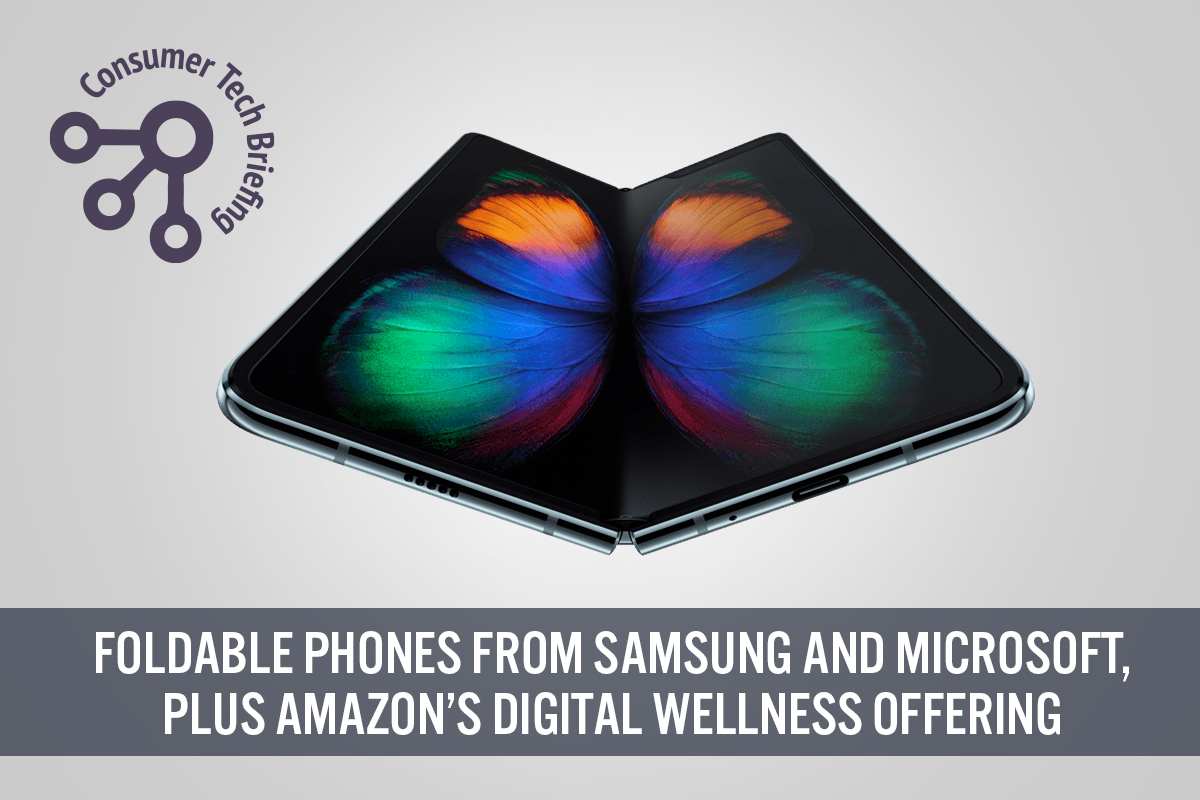
DIpil Das
Each month our Consumer Tech Briefing discusses recent developments in the world of technology. This month, we focus on new product releases from Samsung, Microsoft and Amazon.
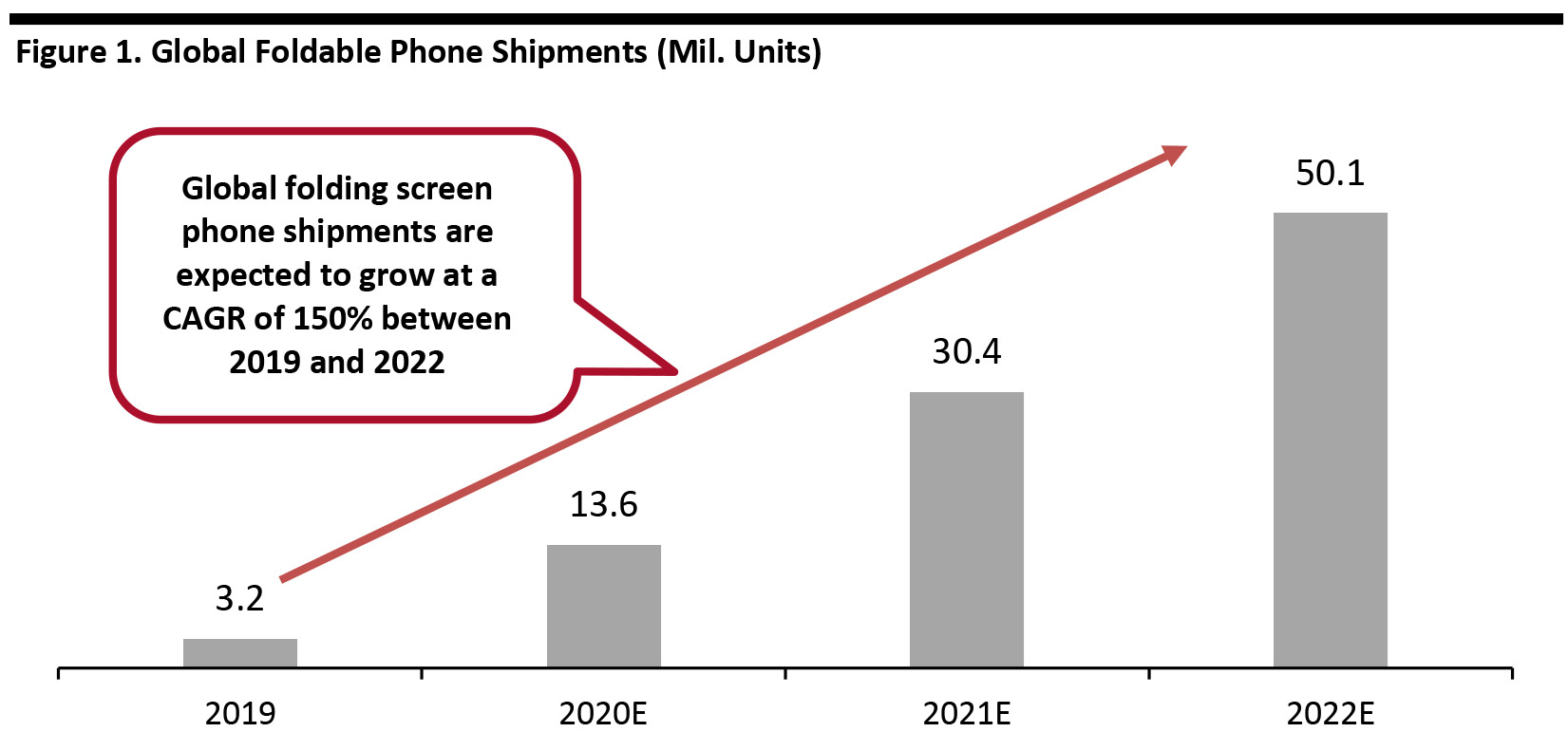 Source: Digitimes[/caption]
In terms of wearable tech, the market currently has space for an indispensable product as there is no clear market leader yet. As shown in Figure 2, the portability and versatility of wearable tech products make them suited for several applications, providing opportunities for companies with expertise in business, communication, health and wellness to capitalize on this gap.
[caption id="attachment_116894" align="aligncenter" width="700"]
Source: Digitimes[/caption]
In terms of wearable tech, the market currently has space for an indispensable product as there is no clear market leader yet. As shown in Figure 2, the portability and versatility of wearable tech products make them suited for several applications, providing opportunities for companies with expertise in business, communication, health and wellness to capitalize on this gap.
[caption id="attachment_116894" align="aligncenter" width="700"]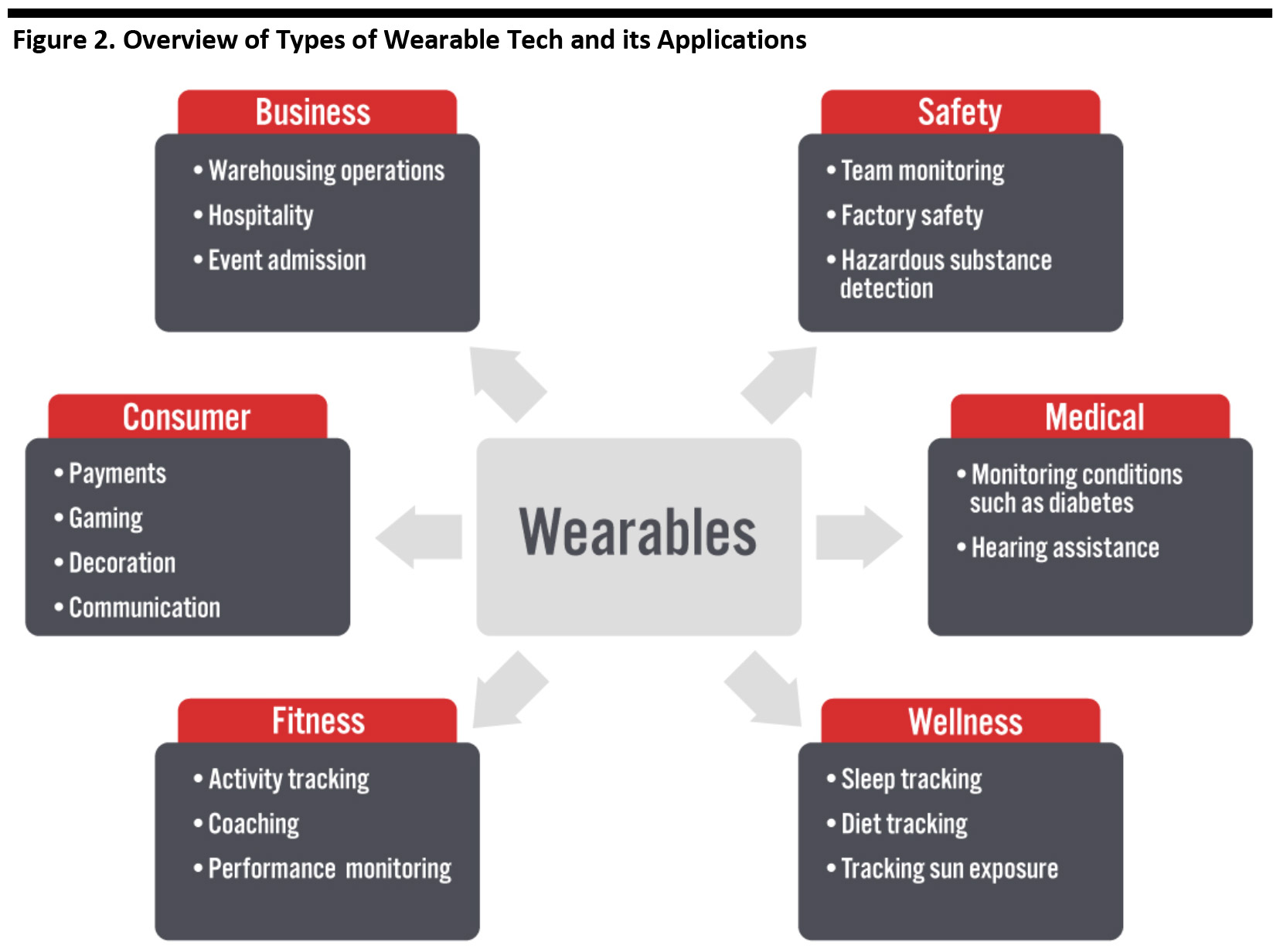 Source: Coresight Research[/caption]
Source: Coresight Research[/caption]
 Samsung’s Folding Screen Smartphones
Samsung’s Folding Screen Smartphones
Source: Samsung [/caption] Microsoft Unveils Surface Duo Microsoft launched the Surface Duo smartphone on September 10, marking the first of the technology firm’s forays into the folding screen smartphone segment. The Surface Duo’s screen does not actually bend—as does the Galaxy Z Fold2 phone—but rather functions with a hinge that runs through the middle of the 8.1 inch phone to join two parts of the screen. Both screens can be used together as a single screen or individually. Users can multitask by running more than one app at once, or by using multiple tabs on the browser on each of the screens, akin to using two desktop monitors side by side. For example, users can attend a Teams call (Microsoft’s messenger application) on one screen while they take notes or refer to documents on the other screen. Users can also use one screen to view email or document drafts while they use the other screen as a keyboard—providing more real estate than a regular smartphone. The Surface Duo comes pre-installed with a host of Microsoft productivity applications, such as the Office suite and Outlook for emails, as well as a number of applications from Google (Web browser, Maps, Gmail, Drive and others). It also includes entertainment apps such as YouTube, HBO MAX and Spotify. While many of its technological specifications are better or comparable to Samsung’s Galaxy Z Fold2, it lacks 5G network and near-field communication capabilities. The Surface Duo is selling at $1,399 in the US. [caption id="attachment_116896" align="aligncenter" width="700"]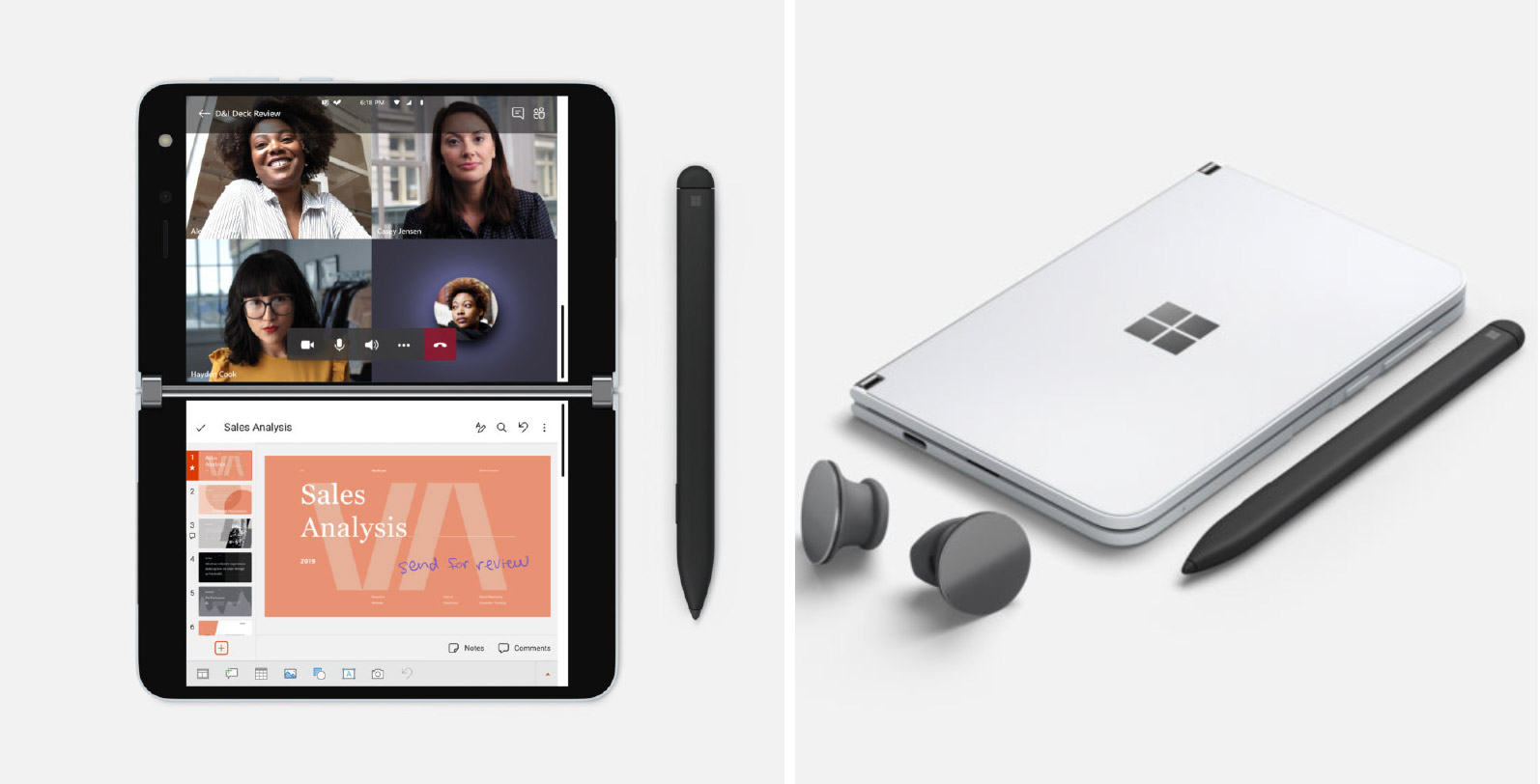 Microsoft Surface Duo
Microsoft Surface Duo
Source: Microsoft [/caption]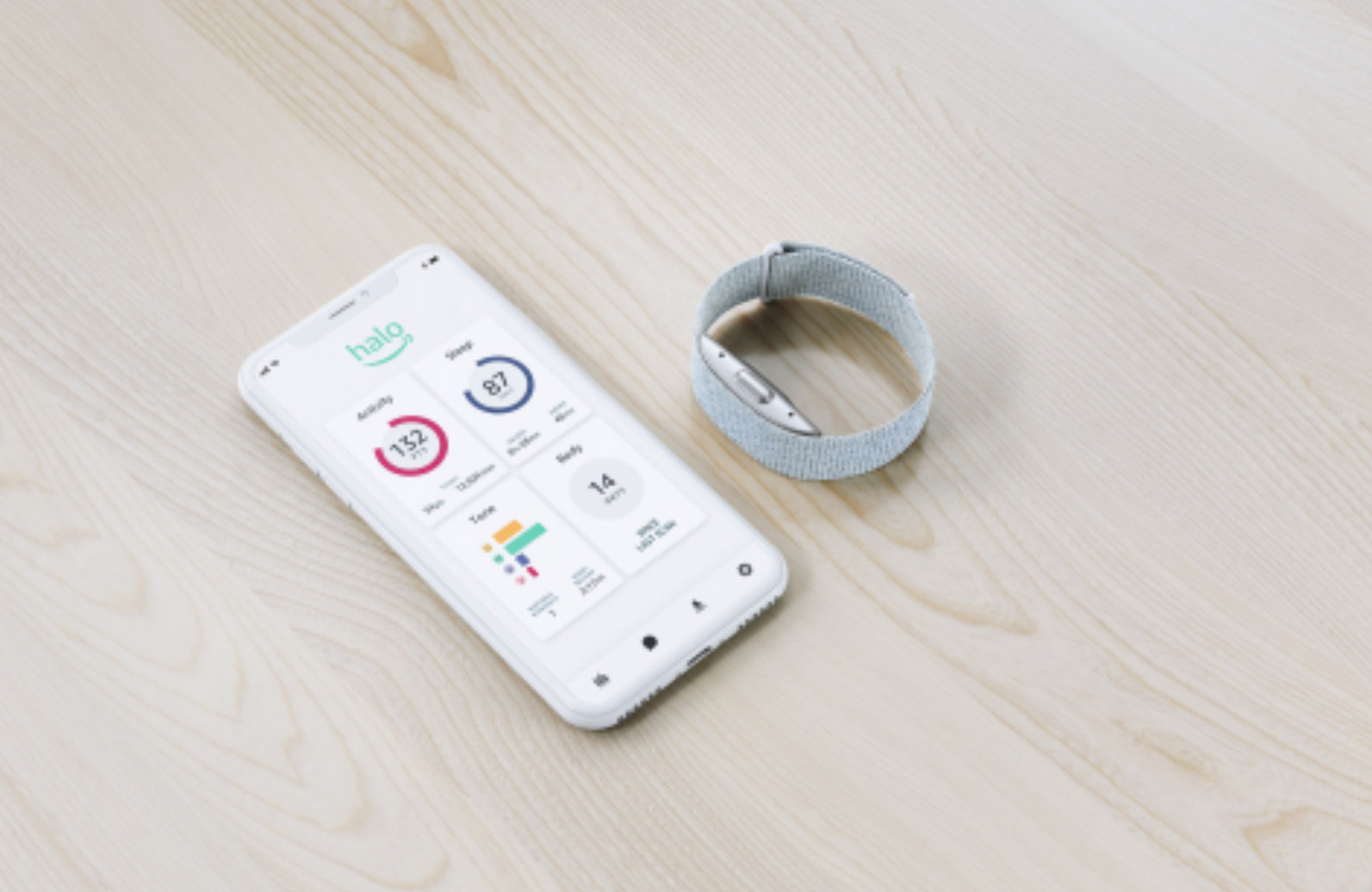 Amazon Halo App and Band
Amazon Halo App and Band
Source: Amazon [/caption]
What’s the Story?
Fall is a season of new product releases for many technology brands. Samsung first released a teaser on the concept of a folding screen smartphone at its annual developers’ conference in November 2018. It has since launched two products with folding screens and will launch a third later this month. Microsoft also launched its own phone models with folding screen capability earlier this month. Amazon launched Halo, a new health wearable at the end of August. Halo monitors the wearer’s activity and sleep to provide wellness insights. This month, budget smartphone brand Vivo is expected to launch its first smartwatch that monitors health factors, activity levels and other indicators.Why It Matters
The folding screen smartphone market is still at a nascent stage with a small range of products available. Aside from Samsung and Microsoft, the only other name brands with folding display screen smartphones are Huawei, LG and Motorola. Other brands, such as Apple and TCL, are rumored to be releasing competing versions in the near future. Global folding screen smartphone unit shipments reached an estimated 3.2 million in 2019 and are expected to grow at a CAGR of 150% to 50.1 million by 2022. This projection by Digitimes is based on analysis of production capacity data from major flexible screen manufacturers. With scope for strong growth and few players in the market, there are opportunities for new brands to occupy the white space. [caption id="attachment_116893" align="aligncenter" width="700"] Source: Digitimes[/caption]
In terms of wearable tech, the market currently has space for an indispensable product as there is no clear market leader yet. As shown in Figure 2, the portability and versatility of wearable tech products make them suited for several applications, providing opportunities for companies with expertise in business, communication, health and wellness to capitalize on this gap.
[caption id="attachment_116894" align="aligncenter" width="700"]
Source: Digitimes[/caption]
In terms of wearable tech, the market currently has space for an indispensable product as there is no clear market leader yet. As shown in Figure 2, the portability and versatility of wearable tech products make them suited for several applications, providing opportunities for companies with expertise in business, communication, health and wellness to capitalize on this gap.
[caption id="attachment_116894" align="aligncenter" width="700"] Source: Coresight Research[/caption]
Source: Coresight Research[/caption]
Folding Screen Phones: In Detail
Samsung Launches New Folding Screen Smartphone On September 18, Samsung launched the Galaxy Z Fold2—a smartphone with a folding screen that can be opened up into a tablet. Samsung demonstrated the first phone with folding screen technology, the Galaxy Fold, at a company event in February 2019 and released review units to the media in April last year. As many reviewers reported malfunctions or damage to the phone during the review process, Samsung delayed the commercial launch from April to September. After ironing out these issues, Samsung launched its second smartphone model in the folding screen range, the Galaxy Z Flip, in February this year. The model is a flip phone that unfolds to look like a regular phone, unlike the Galaxy Fold and Z Fold2 phones which both unfold into tablets. The newer Galaxy Z Fold2 comes with a bigger front screen, at 6.2 inches versus 4.6 inches on the first model. It opens into a tablet with a larger display, at 7.6 inches compared to 7.3 inches on the first model. Samsung has also harnessed “sweeper technology” in the Galaxy Z Fold2, which is meant “to repel dust and undesirable particles”—the cause attributed to the malfunctions in the earlier Galaxy Fold phones. Samsung has used stronger glass for the tablet display in the new model and has upgraded other specifications including memory, network adaptability and processor capacity. Users can multitask by running three separate applications at the same time on the fold-out screen or take advantage of the use the “Flex Mode” to view existing pictures and take photos simultaneously. The Galaxy Z Fold2 is selling at $1,999 in the US. [caption id="attachment_116895" align="aligncenter" width="700"] Samsung’s Folding Screen Smartphones
Samsung’s Folding Screen Smartphones Source: Samsung [/caption] Microsoft Unveils Surface Duo Microsoft launched the Surface Duo smartphone on September 10, marking the first of the technology firm’s forays into the folding screen smartphone segment. The Surface Duo’s screen does not actually bend—as does the Galaxy Z Fold2 phone—but rather functions with a hinge that runs through the middle of the 8.1 inch phone to join two parts of the screen. Both screens can be used together as a single screen or individually. Users can multitask by running more than one app at once, or by using multiple tabs on the browser on each of the screens, akin to using two desktop monitors side by side. For example, users can attend a Teams call (Microsoft’s messenger application) on one screen while they take notes or refer to documents on the other screen. Users can also use one screen to view email or document drafts while they use the other screen as a keyboard—providing more real estate than a regular smartphone. The Surface Duo comes pre-installed with a host of Microsoft productivity applications, such as the Office suite and Outlook for emails, as well as a number of applications from Google (Web browser, Maps, Gmail, Drive and others). It also includes entertainment apps such as YouTube, HBO MAX and Spotify. While many of its technological specifications are better or comparable to Samsung’s Galaxy Z Fold2, it lacks 5G network and near-field communication capabilities. The Surface Duo is selling at $1,399 in the US. [caption id="attachment_116896" align="aligncenter" width="700"]
 Microsoft Surface Duo
Microsoft Surface Duo Source: Microsoft [/caption]
Amazon and Vivo Wearables: In Detail
Amazon Halo Band and App: Artificial Intelligence Helps Users Monitor Health Amazon has released a fitness wristband, called Halo Band, to be used with its Halo app to help people track their activity and sleep, monitor their health, and set and achieve wellness and exercise goals. Unlike many fitness trackers, the Halo Band does not have a screen and does not provide notifications so users will have to use the app to get information. The Halo Band has a water-resistant strap and a sensor capsule which contains an accelerometer, a temperature sensor, a heart rate monitor, an indicator light, and two microphones with a button to turn them on or off, among other functions. The Halo App has five key features that help users understand their health and wellness:- Activity: The band awards users points for their daily activities. Users receive points based on the duration that they are active as well as the intensity of their activity. For example, users will earn more points for running compared to walking and the app deducts points for inactive hours outside of sleep.
- Sleep: The band measures time the user spends asleep and awake, as well as the time spent in the various sleep cycle phases by tracking users’ motion, temperature and heart rate. Each morning, users are presented with a sleep score out of 100, among other data.
- Body: The band allows users to measure their body fat percentage in the privacy of their own home through computer vision and machine learning (ML) technology. Measuring body fat percentage otherwise requires investment in expensive equipment or visiting health professionals that have access to the necessary equipment.
- Tone: Amazon states that this feature employs “ML to analyze the energy and positivity in a (user’s) voice so they can better understand how they may sound to others, helping improve their communication and relationships.” This feature is meant to help users understand their stress levels so that they can be aware of their mood and perhaps take action to alleviate it.
- Labs: This feature offers users challenges, experiments and workouts tailored to users’ specific needs, fitness and wellness status. For example, the app may suggest diet changes to some users and suggest specific fitness activities to others. Amazon has partnered with a number of brands and organizations to provide users content choices, including 8fit, Aaptiv, Headspace, Mayo Clinic, Openfit, SWEAT and WW (formerly Weight Watchers).
 Amazon Halo App and Band
Amazon Halo App and Band Source: Amazon [/caption]
What We Think
The coronavirus pandemic and related lockdowns significantly impacted consumer behavior, leading to a drop in consumer spending on discretionary items. Discretionary spending has been slowly picking up again, signaling a recovery for retailers and brands in this segment. Consumers are looking at ways to optimize remote communication and enhance their work-from-home set-ups, as well as work out and stay fit at home as they avoid gyms and public spaces. Implications for Brands/Retailers- Consumers may be less likely to buy expensive products at this juncture given the impact of job losses and reduced income on household spending earlier in the year. However, as a significant proportion of consumers have cut back on discretionary spending during the year, they may wish to reallocate some of the money they may have saved to gifting technology products during the upcoming holiday season.
- Foldable screen phones are intended to save space while providing users with numerous functionalities to help them multitask or enhance their productivity. Multifunctional devices can be helpful in remote work environments, particularly in households where more than one adult need to share a workspace or need to adapt a workspace to children. Many households may not have capacity for the multiple desktop monitors that some jobs require.
- Devices that can help to track fitness and wellness are likely to be in high demand as consumers are unable or reluctant to work out at gyms or attend fitness classes in person.
- Amazon’s move into the health wearables market signals an acceleration of its incursion into the health-care space—other move by the e-commerce retailer include the acquisition of online pharmacy Pillpack and a joint health-care insurance venture with JP Morgan and Berkshire Hathaway. The move also puts retailers and makers of other wearables at a minor disadvantage as Amazon is not only selling health wearables but building a digital health ecosystem through its partnerships with third-party providers of health programs and services.
- As the pandemic has accelerated consumers’ adoption of digital commerce and ways of working, the demand for multitasking devices and health wearables is also likely to grow. Component manufacturers should be ready to address this demand as consumers increasingly seek to digitalize regular activities and do more through their devices.